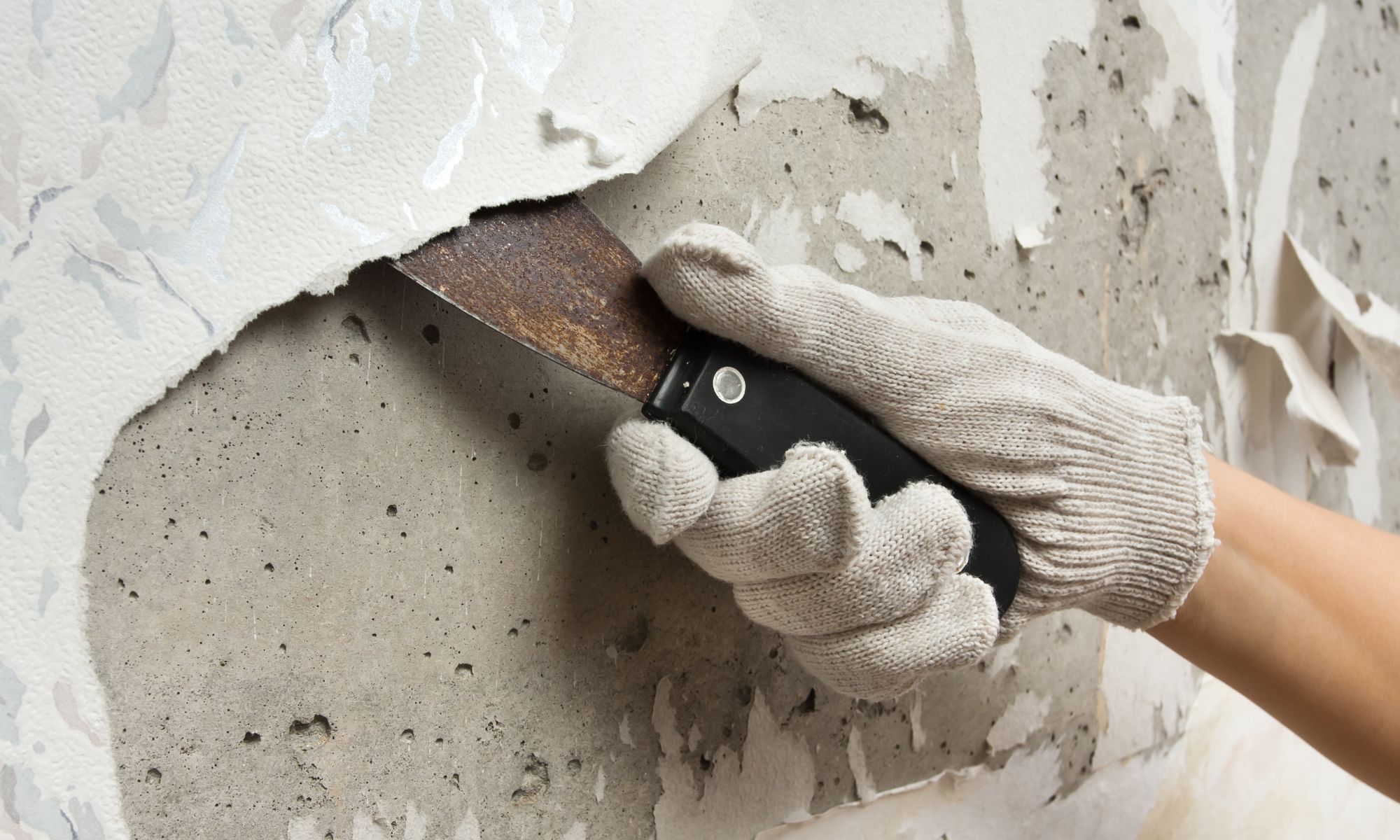How to Remove Wallpaper
Tips for Safety and Success
Published on April 12th, 2023

Your perfect home has one flaw: the previous owners put up garish wallpaper in the kitchen. Will you learn to live with it? Or try painting over it? Neither are ideal solutions. Instead, with a little effort and time, you can safely and successfully remove the wallpaper to customize your own beautiful space.
First, consider the age of the wallpaper. Prior to the late 1980s, manufacturers added asbestos (a silicate mineral) as a fire retardant to ceiling tiles, insulation, carpets, wallpaper and more. Asbestos can be inhaled deep into the lungs causing disease. Particles can become airborne during the process of removing wallpaper.
How can you tell if your wallpaper contains asbestos? One sign is the presence of flexible curls along the upper corners. Another involves the structure: a plastic or vinyl coating over a fibrous paper backing (the type frequently used in kitchens and bathrooms) is a good indication. To be on the safe side, assume that any product manufactured prior to 1990 contains asbestos. Contact your municipal government for guidelines on removal and disposal or hire a professional restoration company.
If your wallpaper is asbestos-free, check to see if it is the strippable variety. Use a putty knife to loosen a corner then try to peel it off. If it comes off easily, you are in luck. Simply continue to slowly pull off the paper by pulling as close to the wall as you can to avoid tearing it. If any fragments remain, you can scrape them off with a putty knife.
If the wallpaper does not strip off easily, then unfortunately, you have a traditional product that will need to be removed with water, a steamer and/or a chemical stripper.
First, consider the wall type. Drywall is made of gypsum plaster sandwiched between two sheets of thick paper, which can easily be warped by excess moisture or gouged. By comparison, plaster is very durable and was frequently used in homes built prior to 1960. One way to tell the difference is to knock on the wall; plaster sounds dull, while drywall sounds hollow.
Steps to remove traditional wallpaper:
1. Remove any artwork or other items on the wall.
2. Cover nearby furniture.
3. At the breaker, shut off the electricity to the outlets, then cover them with masking tape. (Once you have finished removing the rest of the wallpaper, you can return to work on the pieces that remain behind these outlet covers.)
4. Protect crown moulding and baseboards with plastic sheeting taped in place.
5. Using a wallpaper scoring tool, score the entire surface row by row. This puts small holes in the top layer of the wallpaper, which allow water, steam and/or chemical stripper to penetrate the surface.
Spray bottle
1. Starting with a small section in a top corner, use a spray bottle to soak the paper. Wait about 10 minutes and then scrape it off with a putty knife.
If spraying water was unsuccessful, you may need to try using a steam machine.
Steam
Most hardware stores rent wallpaper steamers. Follow the manufacturer’s directions to fill the reservoir and operate the machine.
1. Don goggles, rubber gloves and protective clothing.
2. Place the steamer pad firmly on a corner section of wallpaper for 30 seconds.
3. If the paper has not loosened, try scoring it a bit more to allow the steam to penetrate then steam.
4. Using a plastic scraper or putty knife, scrape away the wallpaper.
5. Work from top to bottom until complete.
If steam removal was not successful, you will need to try using a chemical stripper.
Chemical Stripping
Follow the manufacturer’s directions to prepare and apply the chemical stripper.
1. Wear protective clothing, a cap, goggles and rubber gloves.
2. Ensure the space is well ventilated.
3. Use a spray bottle or paint roller to apply the chemical solution to a small section of the wall, about half a metre square. Let the solution sit and absorb for the time suggested by the manufacturer.
4. Use a putty knife to peel off the wallpaper.
5. Repeat the process working section by section so the solution remains wet.
6. Wipe off any remaining fragments using a rag that has been dampened with chemical solution.
7. Using chemical stripper leaves behind a film that will harm your indoor air quality and make it difficult for paint to adhere to the wall. Remove it by rinsing a section of the wall, then drying it immediately with a clean rag to prevent the drywall from warping. Repeat until it is clean.
Once you have finished removing the wallpaper, fragments, glue, and any chemical residue, let the wall dry completely then check for damage. Sometimes wallpaper is used to hide imperfections. Small repairs can be done with drywall spackle, larger repairs may require drywall tape plus spackle.
Congratulations, you are now ready to repaint and make the space your own.
Sources:
Asbestos 123.com. Accessed March 2023. “How to Identify Asbestos in Wallpaper.” https://www.asbestos123.com/news/identify-asbestos-in-wallpaper.
Lowes. Accessed March 2023. “How to Easily Remove Wallpaper.” https://www.lowes.com/n/how-to/remove-old-wallpaper.
Powered by Froala Editor